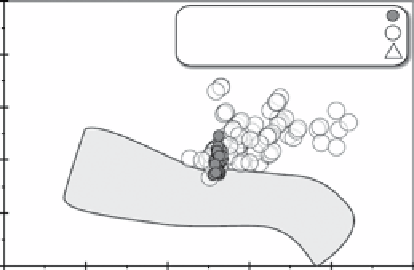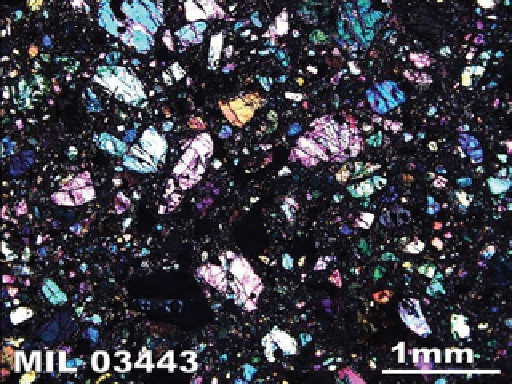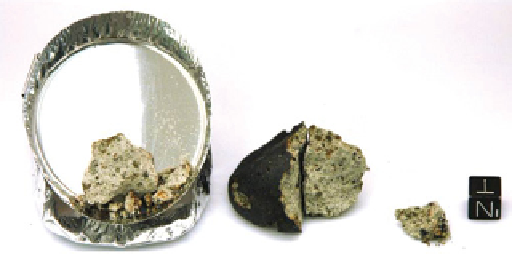Geology Reference
In-Depth Information
HED dunite
46.25 g
Found December 14, 2003
4.0 × 3.0 × 2.0 cm
Weathering = B
parent body, there must be some olivine-rich (dunite) material preserved
in the parent body as well. Therefore, many meteoriticists have looked
carefully for dunitic material among achondrites that may come from the
HED parent body. A handful of dunitic HEDs have been recognized, one
of which is Miller Range 03443.
(a)
Olivine
75
MIL 03443
Diogenites
1
Diogenite Cpx inclusions
MIL 03443
65
,3
55
,0
45
,1
Mesosiderites
2
35
25
0
10
20
30
40
50
(b)
Pyroxene
40
Large opx
grains in MIL
35
30
Cpx inclusions in
diogenite olivine
25
Mesosiderites
2
20
15
Cpx inclusions
in MIL olivine
10
10
15
20
25
30
Fe# (Fe/(Mg + Fe) * 100)
Plate 62
MiNERALogy
SigNiFiCANCE
MiL 03443 is a brecciated dunite composed of mainly
200-400 mm angular olivines, but some as large as 2.5 mm
are present. olivine comprises 91% of the sample (Fa
26
),
whereas minor amounts of orthopyroxene, troilite, and
chromite are also present.
Although originally classified as an olivine-rich clast
from a mesosiderite, this sample clearly is part of the
HED meteorite group and distinct from mesosiderites
(right, [455]). Thus, it offers a rare glimpse into igneous
processes on asteroid 4 Vesta that may form dunites (in
the crust or mantle), and it helps to refine models for the
origin of the eucrites and diogenites.
References [455-457]




